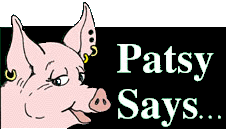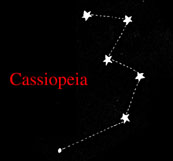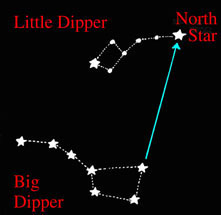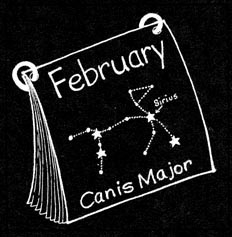
July is a great month for stargazing.

July is a great month for stargazing.
Three of my favorite constellations are: The Big Dipper, the Little Dipper and Cassiopeia. They are very near each other in the summer night sky. Here is how to find them. Think of the North Star as the center of a huge circle, The North Star is "FIXED" but the other stars appear to rotate around the North Star all summer long.
I actually began my summer stargazing on June 21st with a spectacular view of Mars, shining golden in the night sky. Right now Mars is the closest to earth even though it's still 35 million miles away!
The best time to see the most stars is on a moonless night after 9PM.

Locate the two stars at the outside edge of the Big Dipper. "Draw" an imaginary line to the brightest star in the Little Dipper. Congratulations! You just located the North Star! Now, keep going past the North Star and you'll run right into Cassiopeia.

If you want to see Canis Major and the dog star, Sirius, you'll have to wait until winter. Sirius is especially bright in February. HOME PAGE | BOOKS PAGE | GALLERY | KIDS PAGE | TEACHERS/LIBRARIANS

Have you ever heard the term "the dog days of summer?" The months of July and August can be very hot and muggy. During July and August we can't see the dog constellation, Canis Major, because it rises during the day, with the sun. Long ago people blamed the dog star, Sirius, for the hot, muggy days of summer which they called the "dog days."